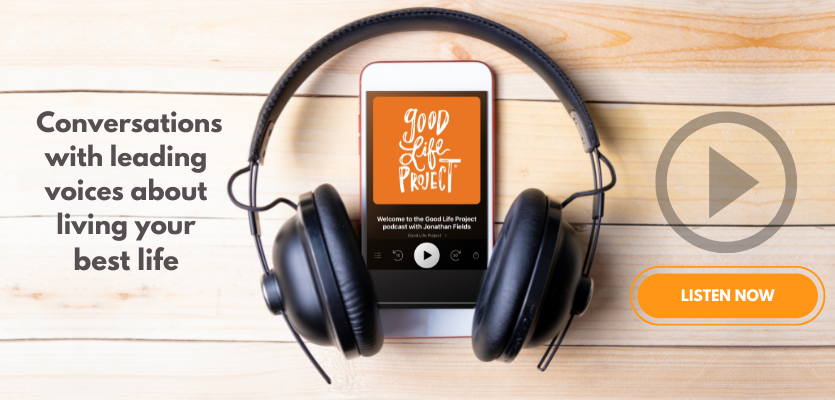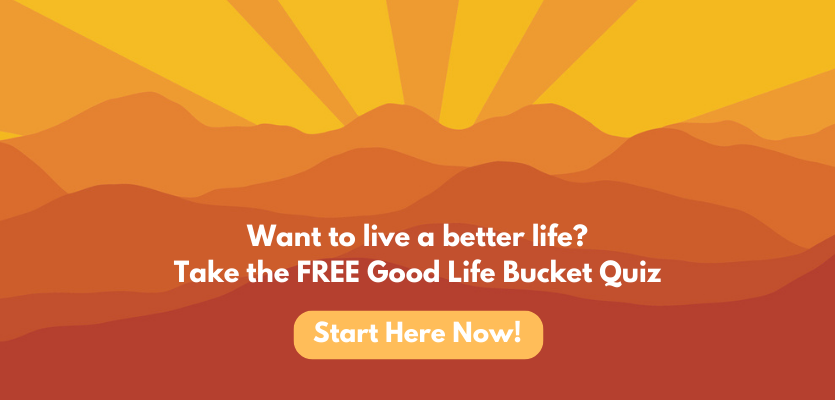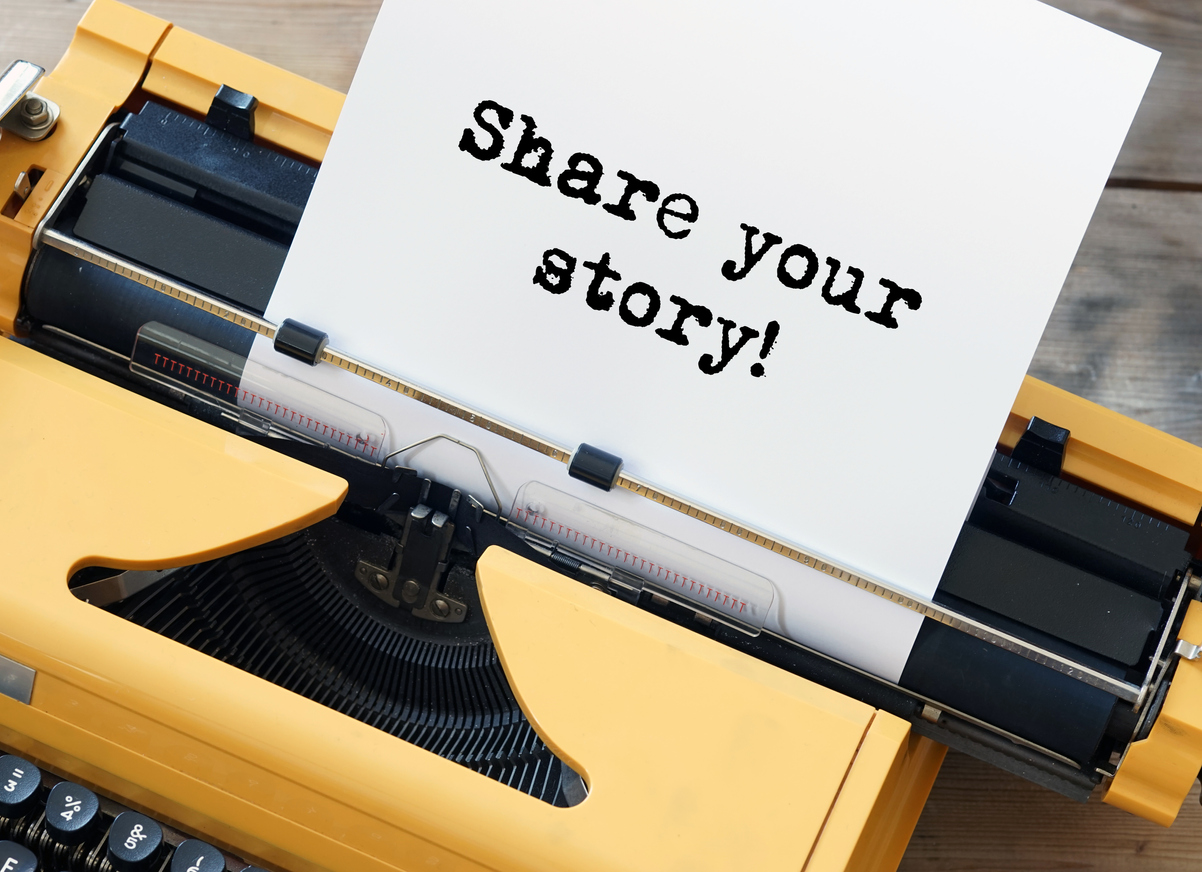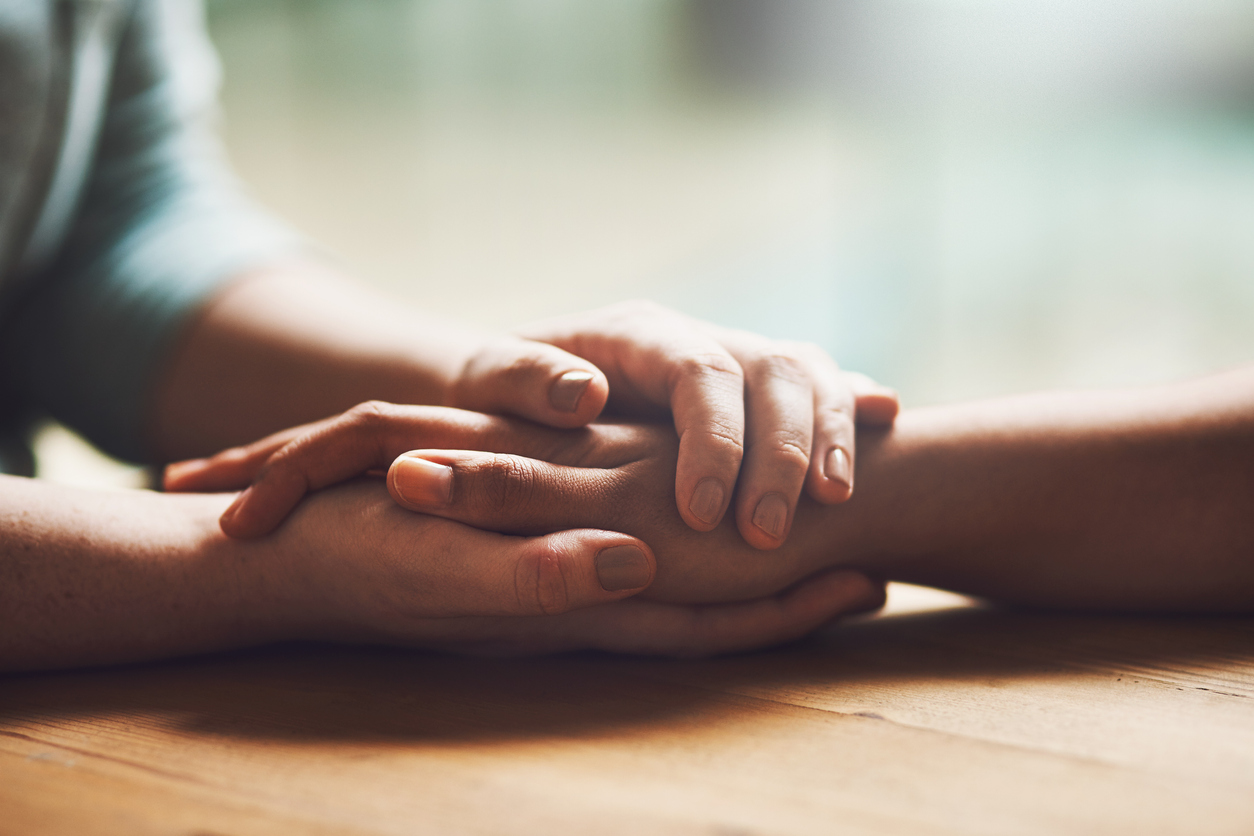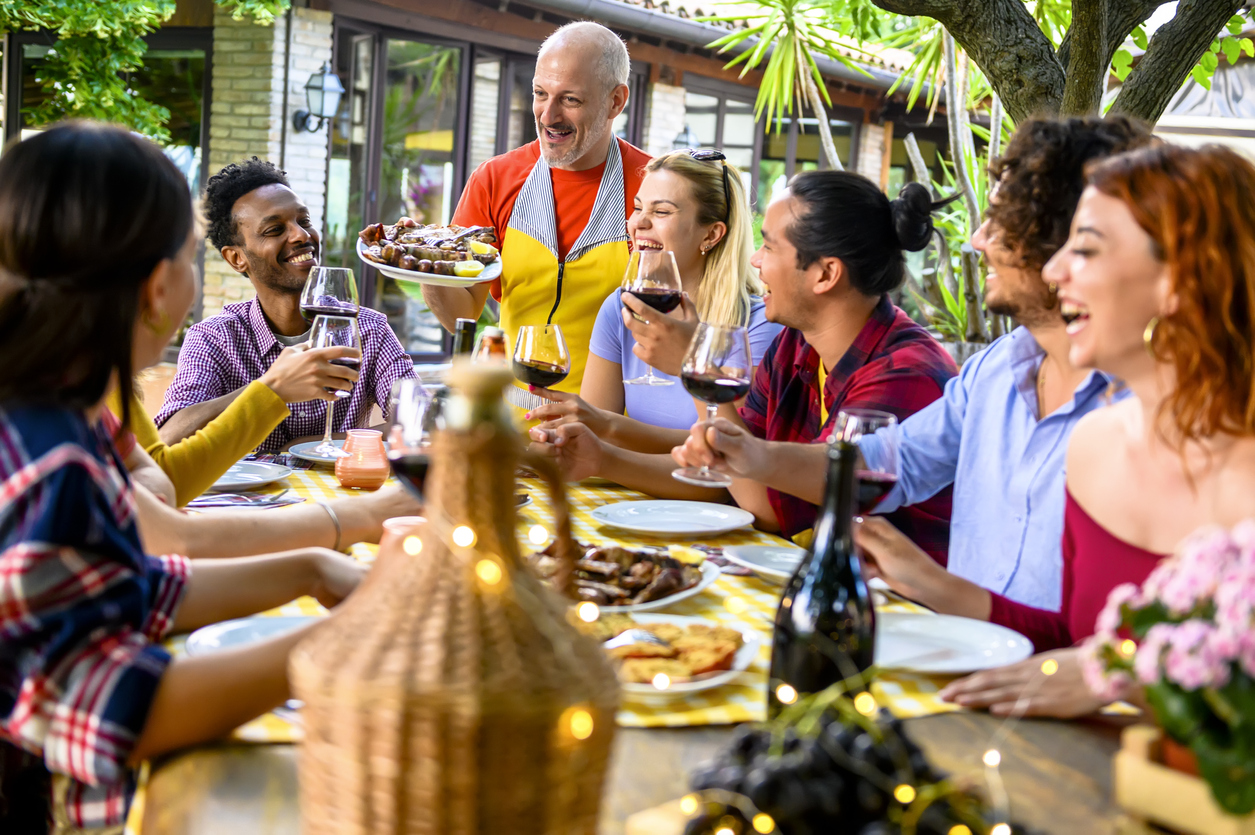Gratitude is incredibly beneficial for you –– it helps you feel better, enjoy good things more, and weather bad things more easily. And yet, when it comes down to practicing gratitude in our daily lives … well, that can feel way harder than it should. But we’re here to help!
As we head into the darkest part of the year, let’s shine a light on what’s good with 30 things we’re grateful for. We’re linking these themes to GLP podcast episodes so you can use this post as a playlist to reboot your practice of gratitude.
1: GRATITUDE – the benefits of gratitude
Gratitude practice is not just a cliche, or just another thing on our to-do list: it makes our lives better. When we’re living gratefully, we can feel the benefits in our mental and physical health, but there’s also science to back it:
“Gratitude is associated with many benefits for individuals, including better physical and psychological health, greater happiness and life satisfaction, less materialism, and more.”
(Greater Good Science Center)
It’s a topic Jonathan loves to talk about, and in this podcast episode with Anne Lamott and Janice Kaplan, you’ll hear all the ways that gratitude is a foundation for How to Live a Good Life.
2: HEALTH – the language of our bodies
If you’re reading this, your body has brought you to this precise moment in time, through sickness and health — and that’s something to be grateful for. Our bodies communicate to us through our physical and mental health, presenting symptoms to get our attention.
We dive deep into the topics of body awareness, wellness, and healing with Dr. Kumar-Singh, a traditionally-trained physician turned Ayurvedic practitioner on this episode of the podcast. Listening to what your body’s saying isn’t always easy, but when we do, we can tap into a more empowered experience of health and wellness.
3: HOME – more than a place
Home is a physical place, many places, or no place at all. Home is a feeling. Home is the aroma of grandma’s chicken soup. Home can be hard. In this episode of the podcast, Jonathan explores the concept of home in an increasingly mobile world in response to a listener’s question.
When we carry our own sense of home inside ourselves, coming home takes on new meaning — home can literally be where your heart is.
4: FAMILY – the ones we hold dear
The families we watched on TV as kids are not the norm, but a lot of us carry internalized media messages about how a family should look and be together. Family comes in so many flavors — the humans who raised us, our special people and pets, the families we create, biological or raised-by families — those who we’re accountable to and who hold us accountable.
During Jonthan’s interview with Trystan Reece, Trystan speaks about about his experience as a trans man who took a nontraditional path to fatherhood, with a solid reminder that family doesn’t have to be “defined by those in power.”
5: CONNECTION – sparks to fuel our own human growth
What happens when our connections with each other go awry? It’s not all smiles by candlelight and warm conversations with dear friends, and in those misfire moments, how can we find a pathway back to connection?
“…it’s easy to point our fingers at the problems elsewhere but more difficult to look within and recognize where we personally are coming up short,” says Simran Jeet Singh in his conversation with Jonathan on the GLP podcast.
We can be grateful for connection while at the same time honoring its shadow side — the ways disconnection can help us reflect and grow into better humans.
6: FRIENDSHIP – learning lab for trust and vulnerability
At the heart of friendship is vulnerability — sharing your whole self with another person. It’s absolutely as scary as it sounds to let ourselves care and be cared for by others, but the payoff is great:
“Creating that cycle of support, both giving and receiving, lets us know each other more deeply and creates intimacy… I feel so much more held and less isolated.”
In this quote, Mia Birdsong was speaking with Jonathan about how to reimagine our relationships into cycles of caring, and the gift of letting ourselves be truly known and seen by our most intimate friends.
7: COMMUNITY – people-powered infrastructure for making change
Something just clicks when we find our people: it’s a homecoming and a recognition that great things are possible together. Building community is predicated on generosity:
“If I love someone, instead of just hoarding them to myself, I’ll introduce them to other people… and all of a sudden there’s a community that will be built if like minded people meet each other.”
Radha Agrawal is speaking about a type of networking and organic growth that can create strong communities that can create change, something we believe at the Good Life Project, on our mission to create a globally-connected, change-oriented community.
8: LOVE – start where you are
Loving ourselves just as we are is a lifelong practice, made difficult with the messaging we receive through the media and social structures. Yet human connection and touch are critical for physical and mental well-being, resulting in:
“… A feeling of calm, of ease, peace, and connectedness. And it works even if there is no other person or being who’s with you.”
Jonathan calls the morning hug one of his five favorite life-changing habits on this episode of the podcast. And the best part? You can start with a self-hug and receive all the same health and mental health benefits.
9: PASSION – connection to joy
Living a good life means finding the spark that ignites your passion, which Jonathan defines as that thing that
“…sets you ablaze with purpose and, fully-expressed in a healthy way, becomes a mainline to meaning, a pathway to that transcendent state of flow, and a gateway to connection and joy.”
How do you identify where your passions are? Look for clues in the places in your life where you feel energized and fired up — taking your free Sparketype assessment is another option.
10: TRANSFORMATION – finding light beyond the darkness
Transformation isn’t a beautiful, newly hatched monarch butterfly. It happens when we’re alone in a dark chrysalis, facing our deepest fears and shame, panic and anxiety. When we feel like we’re groundless and floundering, it can be physically and mentally painful, and that’s how we know we’re in the process of transformation.
For Jordan Harbinger, the transformation came after a professional disaster that left him wondering how he could ever recover. He didn’t know where to go next. The beautiful part was when he realized his community was there to lift him up in his most difficult moments, pulling him back into the light.
11: OUR BODIES – the physical vessel
Try this one on: your body is perfect as it is. It’s not broken, imperfect, or a litany of symptoms. It’s the vessel that carries us in this life, something unique and precious, just as it is in this very moment. Ableism describes the cultural norms that shape perceptions of our own value that are tied to our physical and mental abilities:
“A world built on speed, productivity, more, more, more! — and far too few bathrooms (and bathroom breaks) — does not consider or care for the actual bodies we live in. In other words, ableism affects all of us, whether we consider ourselves disabled or not.” (From Sitting Pretty: The View from My Ordinary Disabled Body)
In Jonathan’s conversation with Rebekah Taussig, quoted above, she speaks to issues of ability and ableism, and how her notions of her own (dis)ability have evolved over time.
12: MAKING THINGS WITH OUR HANDS – our hands are meant to create things
It’s pretty magical that we can take an idea from our head and create a physical thing — a nourishing soup, a sketch, a handknit sweater, or an instrument from a piece of wood. Unlike doom scrolling with our thumbs, using our hands:
“…may actually be key to maintaining a healthy mood, and the lack of this type of activity may contribute to feelings of irritability, apathy, and depression.” (Psychology Today)
For Danny Koentopp, master craftsman of guitars, it goes beyond healthy mood to a type of energy that’s generated in the process of creation. Hear more about how Danny has made a life with his hands on the GLP podcast.
13: CREATIVITY – creativity is curiosity
Sometimes our best creative moments are big breakthroughs or flashes of inspiration — other times it’s a quiet nod, “yeah, I’ll try this thing and see what happens.” Finding creative outlets is an essential part of living a good life, no matter what your medium is, or whether your creativity can even be defined by a medium.
Janine Kwoh shares her story of following her creative path on the podcast. What she didn’t know was that her initial, “yeah, I’ll give it a go”, would eventually lead her away from a career in private equity to a thriving business making letterpress cards.
14: WORK – find your spark
Many of our conversations on the podcast are people sharing their journeys towards meaning — meaningful relationships, transformation, play, and work. When we’re immersed in our work, we lose our sense of time and place, and even of our physical bodies. We’re connected with something greater when we’re in that flow state. Jonathan wonders,
“What are the ingredients to this feeling of being alive that are generated by work? When I’m working really hard, it’s relatively effortless because it’s the thing I’m here to do.”
What if every day our work could feel this good? One of the ways you can reinvent your relationship to work is by finding your spark. In this episode, Jonathan talks about his how to discover the work that makes you come alive (take the free self-assessment)
15: PLAY – humans require play
Did Jonathan’s quote above make you think we were describing play? That wasn’t an accident. That flow state is very similar to how we feel when we play, since play can be defined as:
“…voluntary, it’s pleasurable, it offers a sense of engagement, it takes you out of time. And the act itself is more important than the outcome.” (Dr. Stuart Brown, National Institute for Play)
And if passion and play can be central to your work, as it was for Chef Irene Shiang Li, the potential for personal satisfaction and impact is multiplied exponentially. Hear more from this award-winning chef and changemaker as she dives deep with Jonathan on the podcast.
16: WEALTH AND ABUNDANCE – how money CAN buy happiness
“Do what you love and the money will follow” has become a self-help platitude that’s really about finding a purpose. Purpose is great! We love purpose at the Good Life Project! On the podcast there are some incredible stories from guests who share their path to purpose. But the truth is that money is important because “purpose doesn’t always pay the rent.”
In an episode of the podcast dedicated to happiness and money, Jonathan takes a deep dive to explore the ways we think about this relationship AND what the research says. Can money buy happiness? How much is enough? Give a listen.
17: EMOTION – our guide towards the Good Life
When we’re in the middle of a strong emotion, whether that’s fear, anger, grief, or disappointment, it sure doesn’t feel like something to be grateful for. But what if those very emotions we’d rather avoid are actually how we find our way to the Good Life? In this episode of the podcast, Dan Pink talks about the power of regret:
“Regret teaches us that our lives are a story in which we are both the actor and the author — and understanding that is really important for our well-being.” (The Power of Regret: How Looking Backward Moves Us Forward)
With our strong feelings as guideposts, we gain a new understanding of our values and can use that knowledge to light our way forward.
18: WONDER – a lens for creativity
Is it possible to survive to adulthood with your sense of wonder intact? Our fast-paced world of constant digital connection isn’t helping. But reclaiming the experience of wonder could be the key to accessing our creativity, finding balance, and improving our mental health:
“Not only is wonder valuable, it’s our birthright and possibly part of our evolutionary advantage for how humans have thrived over the millenia.”
Jeffrey Davis remembers the specific moment as a teenager when he realized that his imagination was fading, and in this episode of the podcast he talks about his quest to understand the role of wonder in his life, family, and work.
19: COURAGE – transformation from the inside out
The word courage has a sense of grandeur to it, something big like ascending a peak or going into battle. Courage is an action predicated on emotion: your willingness to do something even when it’s frightening, sad, or painful. And in today’s world, our news feeds are filled with a litany of those three things. It’s easy to feel overwhelmed and powerless. Where to even begin?
Dr. Jacqui Lewis believes self-love is a courageous act that is the bedrock for making change:
“The world doesn’t get great unless we all get better.”
We — collectively — are uplifted, when we — individually — start with self-love. In Jonathan’s interview with Dr. Lewis, we hear more about how the courage to self-love is the fuel we need to jumpstart change.
20: CLARITY – pathway to healing
In moments of tumult and chaos, we go into survival mode just trying to keep our heads above water. It’s likely we’ll fall into old patterns that may not be healthy ones when we’re scattered and ungrounded.
Clarity is a theme of many of our conversations in the Good Life community — getting clear on our purpose, values, and in our relationships guides us towards a life that is authentic and our own.
For Jonathan’s guest Diego Perez (who writes under the pen name Yung Pueblo), it was a combination of meditation and writing that brought him to a new sense of clarity. Diego’s discovery was that finding clarity helped him start healing, letting go of accumulated emotions and patterns. Give a listen to this exploration of clarity and connection with Jonathan and Diego.
21: AUTHENTICITY – be a better human by listening to yourself
When we aren’t authentic or true to our values, we often feel it in our bodies, as something heavy in the pit of our stomach or tension in our shoulders. For people in the public eye, there’s additional pressure and demands to present in a certain way:
“I would rather wake up every day and feel good about what I choose to make art about than be so benign or so without an opinion that nobody knows what I stand for. I run a values-driven business and I want to make sure that those values are reflected in what I’m sharing.”
Listen to the podcast with Lisa Congdon as she talks with Jonathan about how she’s been intentional in bringing her whole self to life as a successful artist, partner, activist, and athlete.
22: STORY – listening with our hearts
“Just one more!” Whether that’s the next episode of a show you’re streaming, another chapter before bed, or cueing up the next song, we get sucked in by all types of narrative. In Jonathan’s interview with author Sue Monk Kidd, she says:
“The shortest distance between anything is a story that jolts the heart.”
Listening and telling stories is something that goes way back in our human history and is also central to our work at the Good Life Project. For sure we believe in science, data, statistics, and numbers, but stories communicate information to our hearts and souls. One of the gifts of the Good Life community is sharing stories with each other.
23: SPIRITUALITY – the practice of connection
“Spiritual but not religious” is how some of us define ourselves. But within that, there’s a lot of variability in interpretation, often it’s identified as a connection to something bigger than ourselves. Jonathan digs deep into these questions and why they matter, with Rabbi Rami Shapiro on the podcast:
“Spirituality is the practice of awakening to your true nature as an expression of this infinite, non-dual, divine reality. It’s not a feeling, not a buzzword, but practices (and you can find them in every religious tradition) that are designed to overcome the ego’s sense of alienation — and awakening to the realization that you are a manifestation of _____ (fill in the blank).”
Whether it’s meditation, church, mosque, or synagogue, yoga, music, or fill in the blank — the practice itself is the vehicle for us to connect ourselves to something infinite.
24: BOUNDARIES – manifestation of your values
Boundaries — are they impermeable fences or flexible and adaptable guidelines? On a podcast spotlight conversation all about boundaries, Nedra Glover Tawwab shares a clear definition with Jonathan :
“Boundaries are your needs, your expectations, things that will keep you safe and sane in your relationship with yourself and others.”
It sounds so simple, right? But the practice of creating, maintaining, and adapting our boundaries is the work of a lifetime, constantly tested in small and big ways. On the path to the good life, boundaries are a key part of practicing our purpose and values, honed by our relationships, and in our work and play.
25: MUSIC – shortcut to creativity
Often referred to as the universal language, music conveys emotion and narrative that extends beyond what can be communicated in print or even in spoken words. It makes us feel good, gets us dancing, and it can also elicit more nuanced emotions that we may not even have words for.
Did you know that music also helps spark creativity?
“Music enhances the cognitive flexibility needed to come up with innovative solutions — the ability to switch between different concepts and perspectives, rather than seeing the problem from a rigid point of view.”(Greater Good Science Center)
If you’re curious to learn how music makes us better humans, check out this episode of the podcast in which Jonathan nerds out with musician Ben Folds.
26: LEARNING – making good humans, making better communities
If you’ve been here for a bit — or if you’ve read this far — you know we’re passionate about and grateful for learning in the Good Life community. We often talk about the personal benefits of learning, whether the goal is personal growth or building assets towards a new career. Lewis Howes makes the case for continuous learning as a means to build connections with others, in a 10-minute podcast riff:
“Never underestimate how powerful you can be when you add a new skill set to your life, even if you don’t think it relates to anything you’re doing. But someday, down the road, you’re going to meet someone where that skill will add value in that moment.”
Learning is central to discovering what a good life means for each of us individually, and also in our quest to build authentic relationships within our communities.
27: THIS BREATH
It’s all you have: just the one breath and one moment you’re experiencing as you read this sentence. The benefits of yoga, mindfulness, and meditation are well-documented in terms of how they impact our mental and physical health and overall well-being. Central to those practices is breathing:
“How we breathe may help with health and longevity, and paying attention to it is long overdue.” (How One Hour of Slow Breathing Changed My Life)
On the GLP podcast, James Nestor shares the current research on breathing, its history within a context of spiritual practices, as well as his own experience of how breathing has been transformative in his life.
28: VISION YOUR WORK – imagination fuels a vision
“Let’s revisit our vision statement!” Cue a chorus of groans. Some of us just pretend we get the difference between vision and mission statements — they’re supposed to be short statements and one of them includes bullet points, right? Not according to Ari Weinzweig:
“Visioning is a bit like coming home, home to ourselves, home to a community of our own choosing, home to a future that fills us with hope.”
Ari’s imaginative and narrative approach to creating a vision has guided the growth of his successful businesses. Want to know more about how to avoid a chorus of groans at your next visioning session? Give a listen to the podcast.
29: VISION YOUR LIFE
In the Good Life Project community — and certainly in many of the stories on the podcast — we explore how individuals chart a course towards their own version of the good life. It could be a crisis that motivates a radical new direction, a more subtle course correction, or a flash of inspiration that opens possibilities for a new future.
A vision for your life is similar to a vision for your work — it starts with imagination:
“If you imagine less, less will be what you undoubtedly deserve. Do what you love, and don’t stop until you get what you love. Work as hard as you can, imagine immensities, don’t compromise, and don’t waste time. Start now. Not 20 years from now, not two weeks from now. Now.”
Debbie Millman reminds us to imagine — and keep re-imagining — what the best version of our life can look like. In her conversation with Jonathan, Debbie shares the tools for how to imagine your future into being.
30 : YOU!
As we wrap up our gratitude playlist of themes and topics we love exploring here at the Good Life Project, we want to extend our thanks to you, our GLP community. We’re happy to be on the journey with you, here to support you along the way, and excited to see where the path takes us.
Join our GLP newsletter family for more big conversations into topics like these. Each email is crafted as an invitation to connect with the community — a space to explore ideas, reflect deeply, and amplify our learning with each other — on the quest to live our best life. Join us here.
